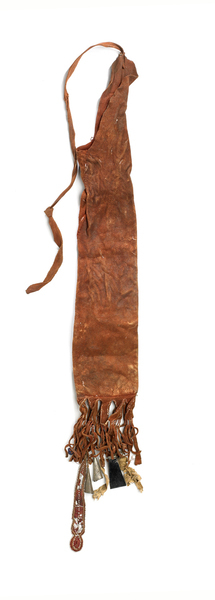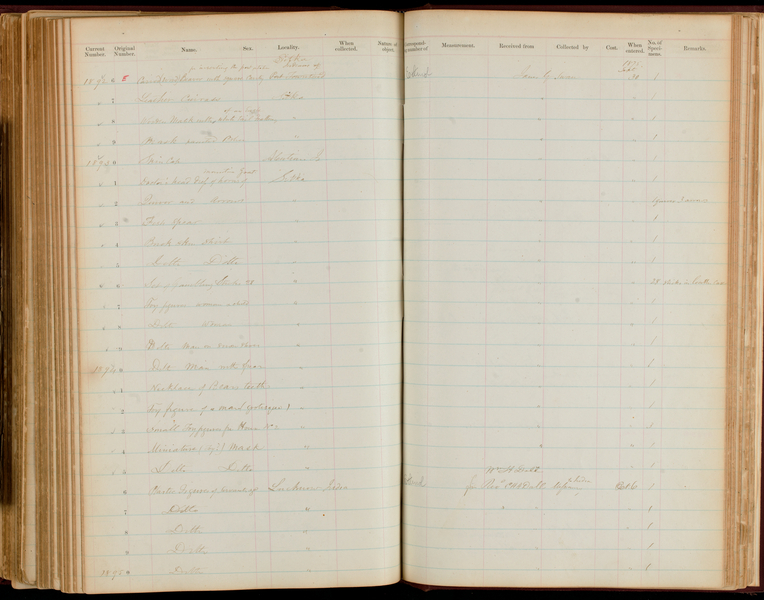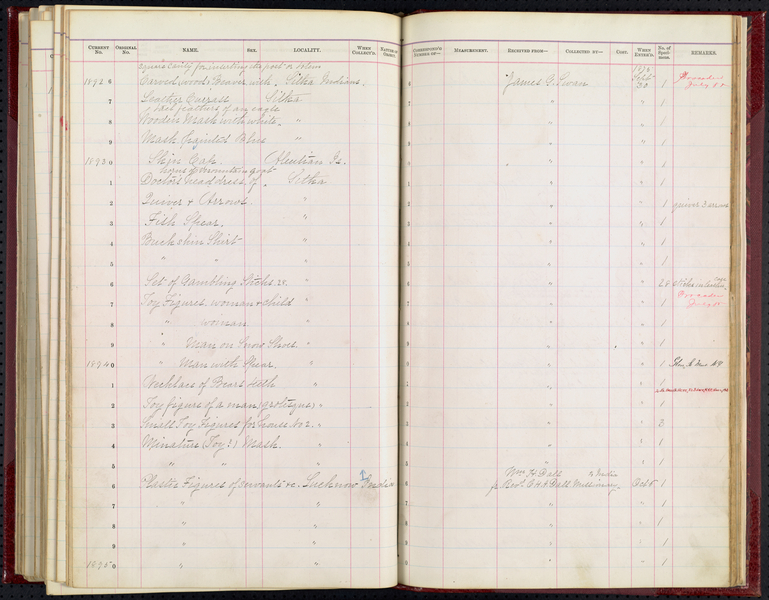Paint Bag Item Number: E18932-0 from the National Museum of Natural History





Notes
As of the 1970's inventory, only one object was located with this catalogue number, a paint bag; no quiver or arrows were located. This object is on loan to the Anchorage Museum at Rasmuson Center, from 2010 through 2027.Listed on page 46 in "The Exhibits of the Smithsonian Institution at the Panama-Pacific International Exposition, San Francisco, California, 1915", in section "Arts of the Northwest Coast Tribes (Tools)".From 2008 Anthropology condition treatment report: Paint bag made from red pigmented hide with two tin tinkler cones, two small ermine feet, a triangular tin plate and a wrapped hide bundle all tied into the fringe that is sewn to the bottom. The paint bag is fabricated from one piece of hide that is folded along its length and sewn up the side with sinew. A V-shaped gusset sewn into the top portion of the side seam allows for expansion at the opening of the paint bag. All the seams at the side and base of the bag are sewn from the inside. A strap of hide has been sewn to the top edge with sinew. A fringe of hide is sewn into the seam at the bottom of the bag. The fringe is fabricated from 10 broad strips of hide that have been trimmed along their outer edges with a decorative stitch of caribou hair. The distal end of each fringe strip has then been cut longitudinally into four slender strips that are bound at the top with a wrap of caribou hair. The following items have been tied to the ends of some of the slender fringe strips: a blue bead; two tin tinkler cones; a tin triangle coated with a glossy black paint; one ermine paw; one hide bundle wrapped with sinew into a compact square; one distorted hide bundle, which may once have been tied; and a long strip of red wool embroidered with white threads and decorated with white beads. The inside and outside of the hide are colored with a red ochre pigment. There is a greater quantity of red ochre pigment on the inside of the bag.
Item History
- Made in Sitka, Baranof Island, Alaska, USA
- Collected by James G. Swan in Sitka, Baranof Island, Alaska, USA
- Received during 1875
What
- Name
- Paint Bag
- Identification Number
- E18932-0
- Type of Item
- paint bag
Who
- Culture
- Tlingit ?
- Field Collector
- James G. Swan
Where
- Holding Institution
- National Museum of Natural History
- Made in
- Sitka, Baranof Island, Alaska, USA
- Collected in
- Sitka, Baranof Island, Alaska, USA
When
- Acquisition Date
- during 1875
Other
- Accession Number
- 004126